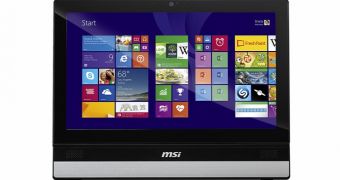One of the problems with sitting in front of a monitor for hours on end is that the eyes tend to tire much faster than, say, if you gazed into the night sky. There are ways to reduce this effect, however, and Micro-Star International used the two best proven ones in the Adora20 and Adora22.
First off, however, the Adora20 and Adora22 are not monitors. Instead, they are 20-inch and 22-inch all-in-one personal computers.
That still means that the eye strain issue applies though, so Micro-Star International implemented the Anti-Flicker and Less Blue Light technology.
Neither is all that obvious to the naked eye. Flickers only show up if, say, you shoot a video of an operational display.
As for blue light, it is a third of what makes up the images that all displays show, save for the few that also use yellow as a fourth color.
Anyway, by reducing the intensity of the blue color, the strain on the eye is lessened. The same with the anti-flicker tech. Add to that anti-glare protection (so you won't get reflections in your screen whenever ambient light is high) and the MSI Adora20 and Adora22 All-in-One PCs have the perks they need to stand out.
Not that anti-flicker and Less Blue Light technology are unheard of, but they are pretty rare even on monitors, let alone all-in-one computers.
Speaking of which, the systems are built around a fourth-generation Intel mobile central processing unit and have NVIDIA's GeForce GT 740M GPU discrete inside.
Needless to say, there is instant graphics switching technology between the integrated processor in the CPU and the discrete card. Ergo, when nothing too strenuous is happening, the NVIDIA board is inactive.
Memory and storage aren't elaborated upon in the press release, which suggests 500 GB / 1 TB HDDs (SATA III 6.0 Gbps) and maybe 8 GB or 16 GB RAM (DDR3). The usual as it were.
As for the software side, the Microsoft Windows 8.1 operating system is installed on both the MSI Adora20 and Adora22. It explains why the company went to the trouble of including 10-point multitouch support on the duo. That user interface needs to be manipulated somehow, and the mouse just won't cut it, not every time.
You'll have to check out your local retailers and MSI stores, if any, to order one of these two, whenever they decide to start shipping. Their prices were left out of the introduction.

 14 DAY TRIAL //
14 DAY TRIAL //